Abdomen Anatomy & pathology
1/53
There's no tags or description
Looks like no tags are added yet.
Name | Mastery | Learn | Test | Matching | Spaced |
|---|
No study sessions yet.
54 Terms
Abdominal cavity extends from
diaphragm to superior aspect of bony pelvis
What does the abdominal cavity consist of?
stomach, small & large intestine, liver, gallbladder, spleen, pancreas, and kidneys
what is the largest hollow space of the body?
abdominal cavity
the pelvic cavity lies
within margins of bony pelvis
what does the pelvic cavity contain?
rectum & sigmoid regions of colon, urinary bladder, and reproductive organs
3 main interest of the pelvic cavity for positoning
iliac crest, anterior superior iliac spine (ASIS), and pubic symph
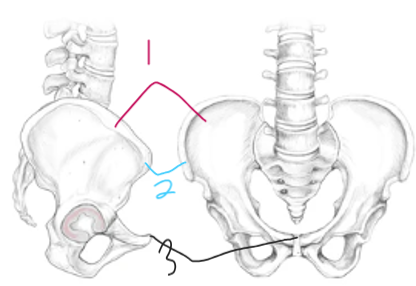
what part is labeled 1?
iliac crest
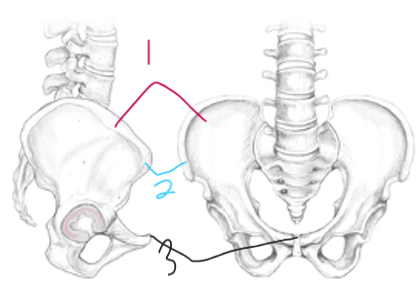
what part is labeled 2?
ASIS
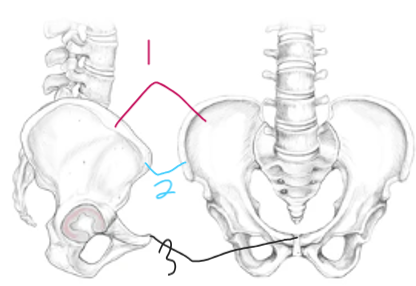
what part is labeled 3?
pubic symphysis
what is at the level of the pubic symph?
the greater trochanter
abdominal peritoneum
encloses abdominopelvic cavity & is a double walled membrane
parietal peritoneum
outer portion (lines cavity) & is in contact w/ abdominal wall
visceral peritoneum
inner portion (surrounds organs)
peritoneal cavity
in between; contains fluid
mesentery & omenta
folds which support the organs in position
mesentery
assist in attachment of the organs to the posterior abdominal wall
omenta
protective “drape” (part of mesentery) hangs from the stomach & attaches to the colon
retroperitoneum
cavity behind the peritoneum which includes the kidneys, pancreas, ureters
what are the quadrants of the abdomen?
RUQ, LUQ, RLQ, LLQ
does the right or left kidney lie lower?
right kidney
does the right or left flexure of the colon lie lower?
right flexure
the liver does what to the right side?
pushes down on the organs
the liver does what to the left side?
pushes up on the diaphragm
flank
side of a person’s body between the ribs & the hip
during expiration the diaphragm looks like
a parachute
do we exhale or inhale on abdomen images?
exhale
volvulus
twisting of bowel on itself
radiologic appearance of volvulus
dilated bowel
technical factor of volvulus
typically, subtractive - may have to decrease technique due to abundance of air…. if known opaque obstruction, then increase technical factors
pneumoperitoneum
free air in the peritoneal cavity of abdomen
radiologic appearance of pneumoperitoneum
air accumulating at the highest point
technical factors of pneumoperitoneum
subtractive (decrease technique due to additional air)
pneumoperitoneum can be seen on what x-ray?
chest
ascites
accumulation of fluid in the peritoneal cavity
radiographic appearance of ascites
wash out, overall gray
technical factors of ascites
additive (may have to increase technique)
bowel obstruction
partial or full blockage of large or small bowel that does not allow substances to pass through
radiographic appearance of bowel obstruction
dilation of bowel
technical factors of bowel obstruction
depending on blockage, may need to increase/decrease
pica
psychological disorder of intentional and craving consumption of non-nutritive substances over a period of time
radiographic appearance of pica
appearance of foreign objects/ substances
technical factors of pica
depending on blockage, may need to increase
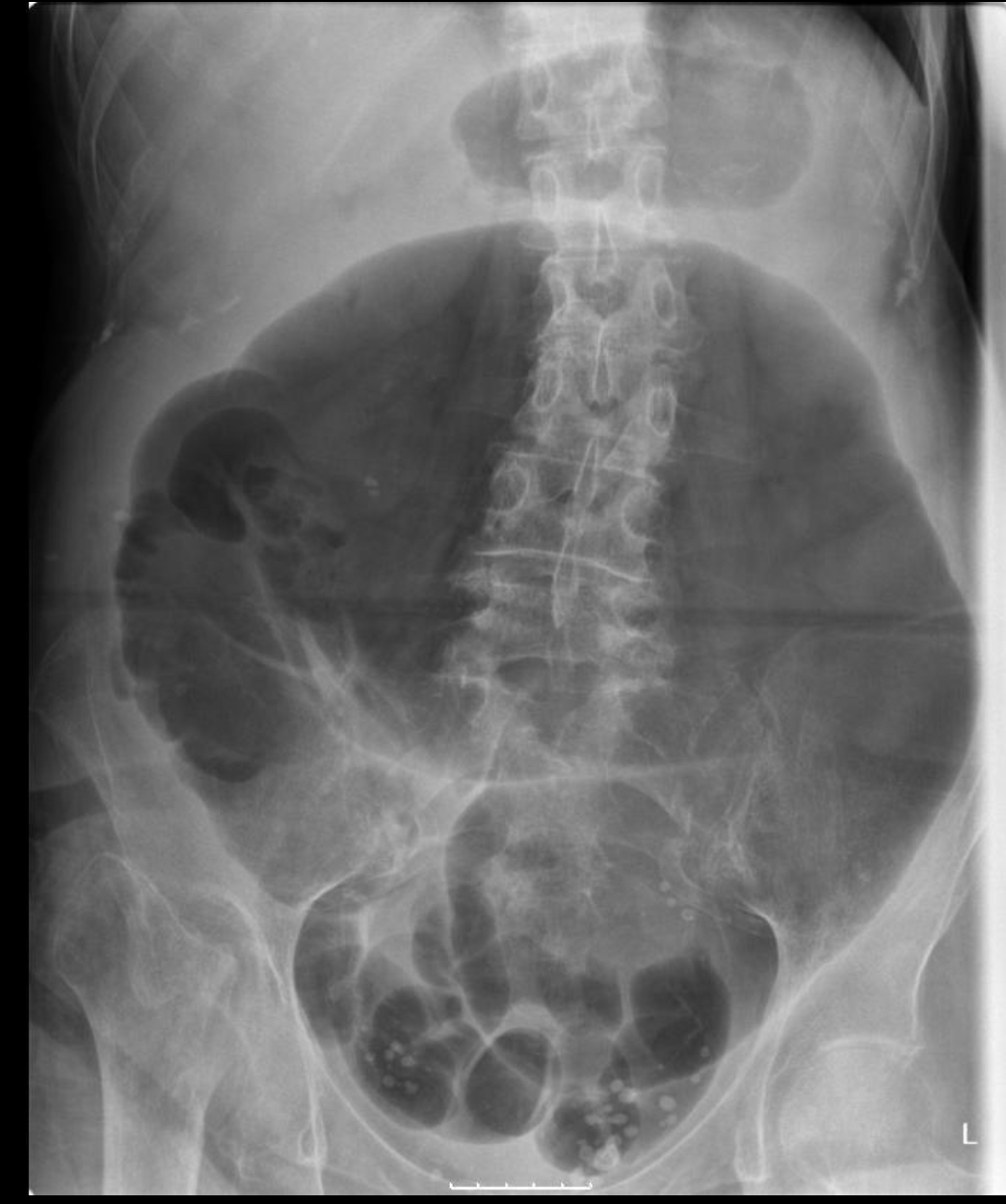
What pathology is this?
Volvulus
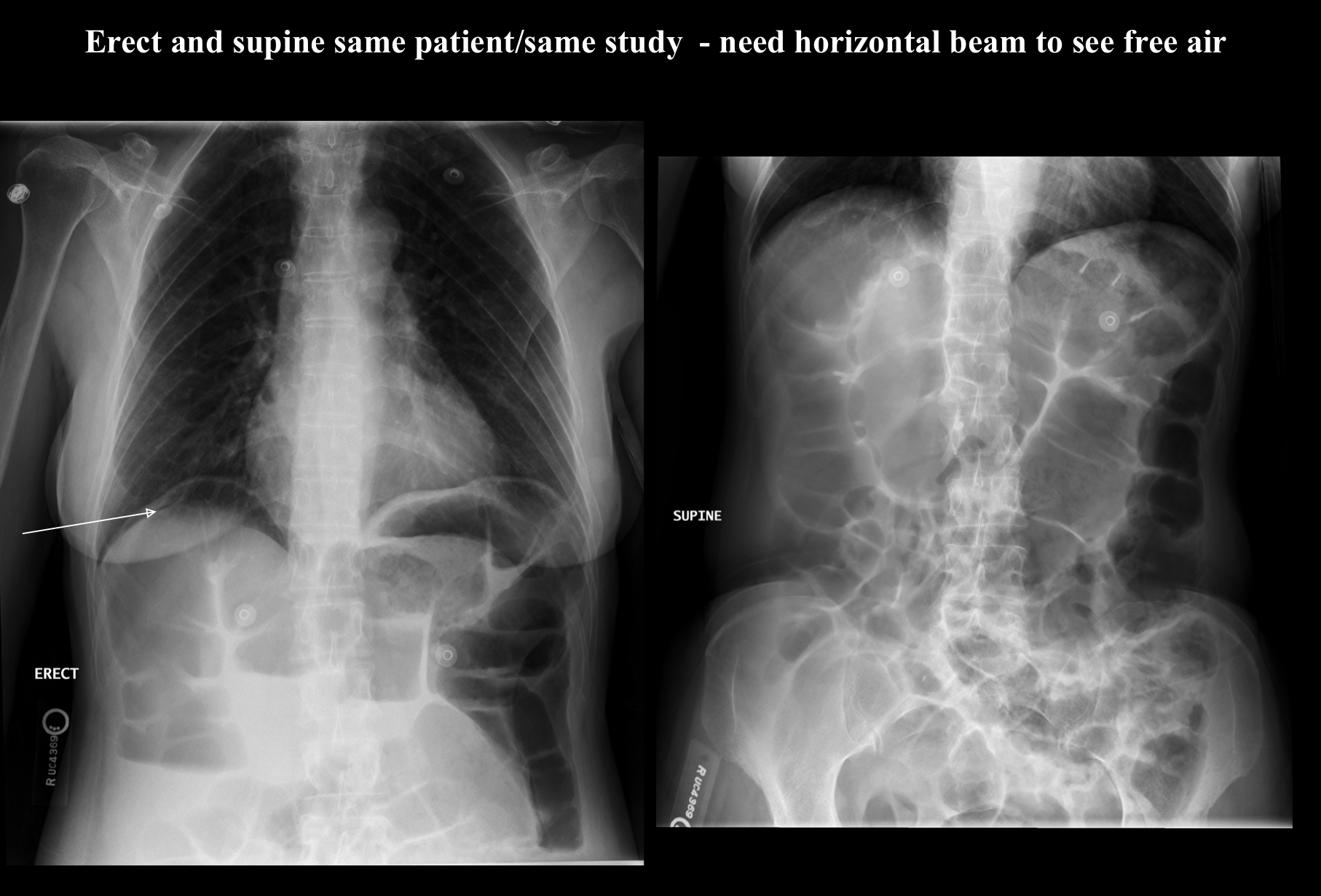
What pathology is this?
Pneumoperitoneum
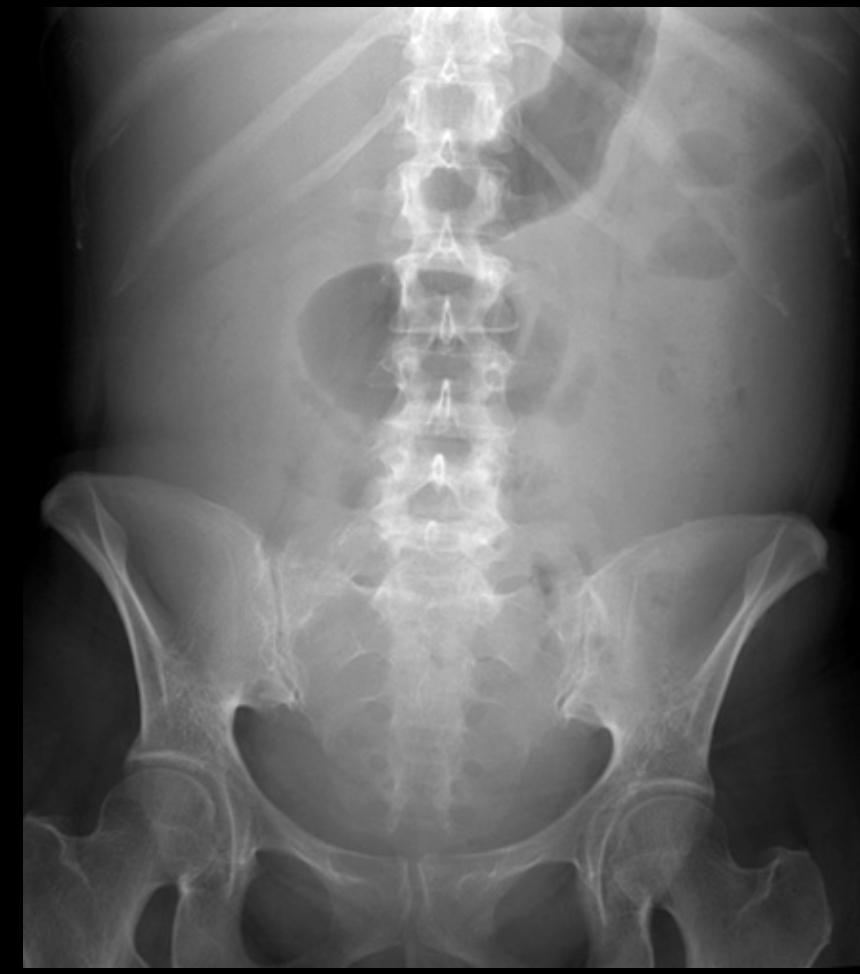
What pathology is this?
Ascites
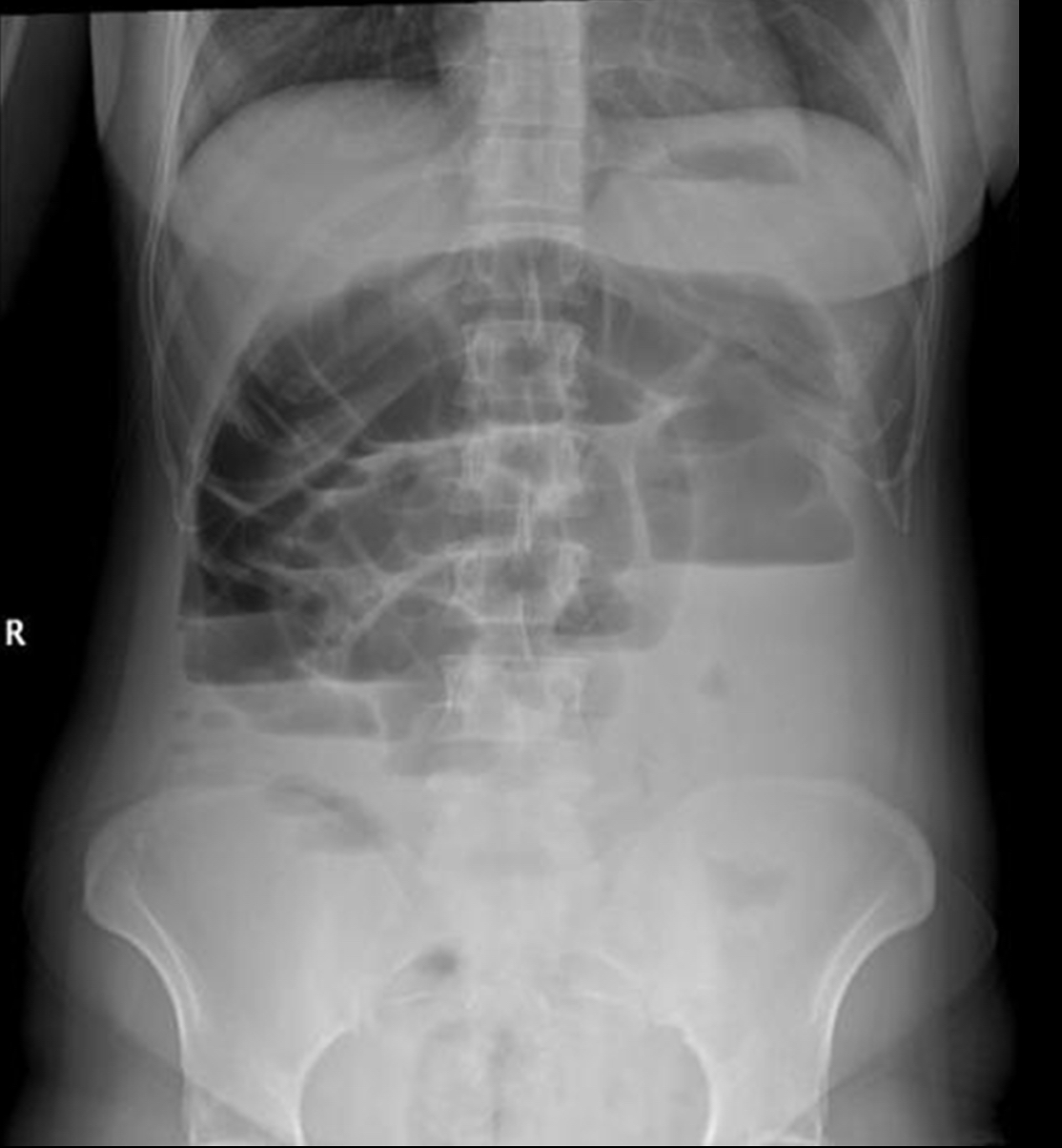
What pathology is this?
Bowel obstruction
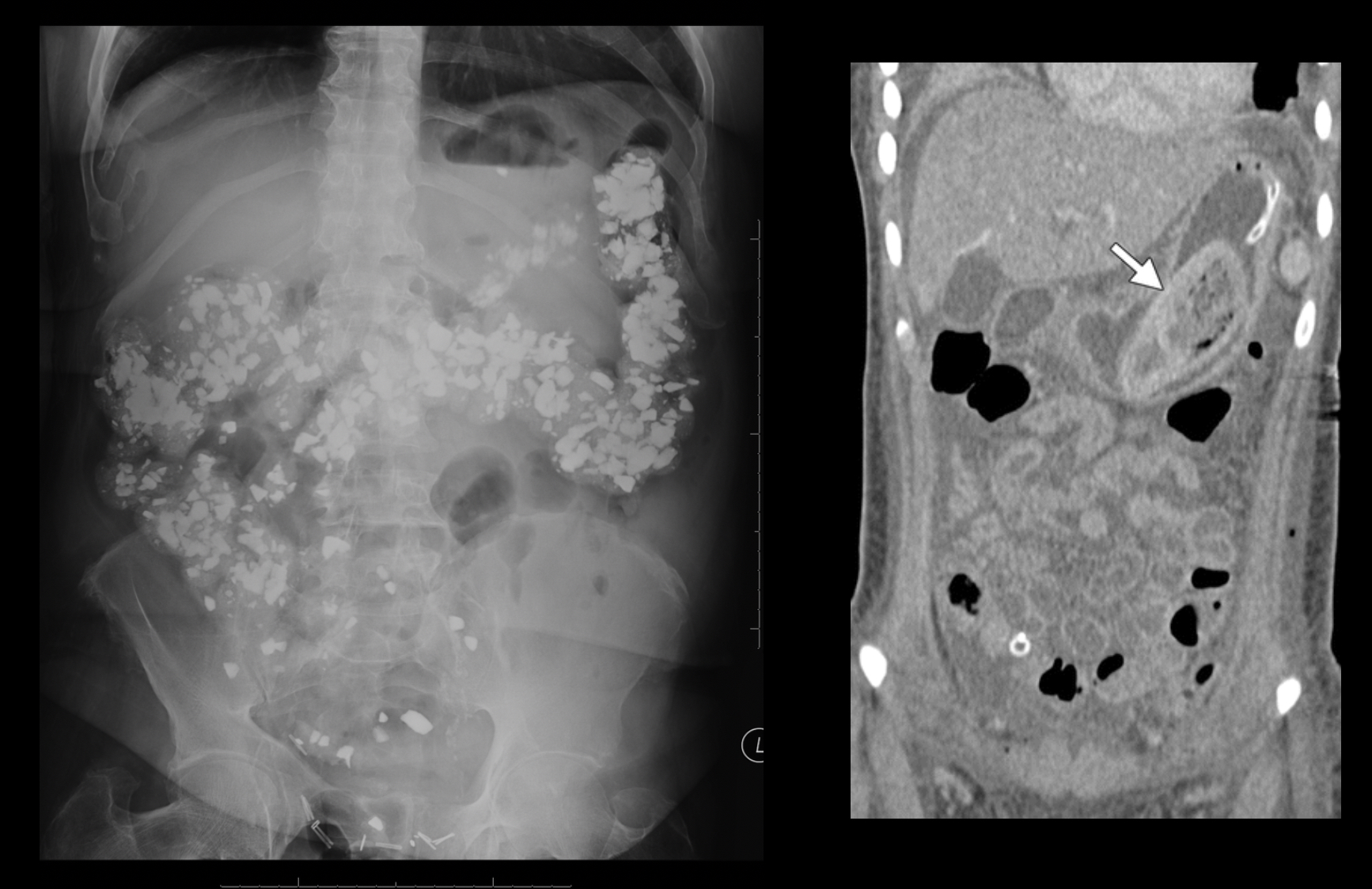
What pathology is this?
Pica
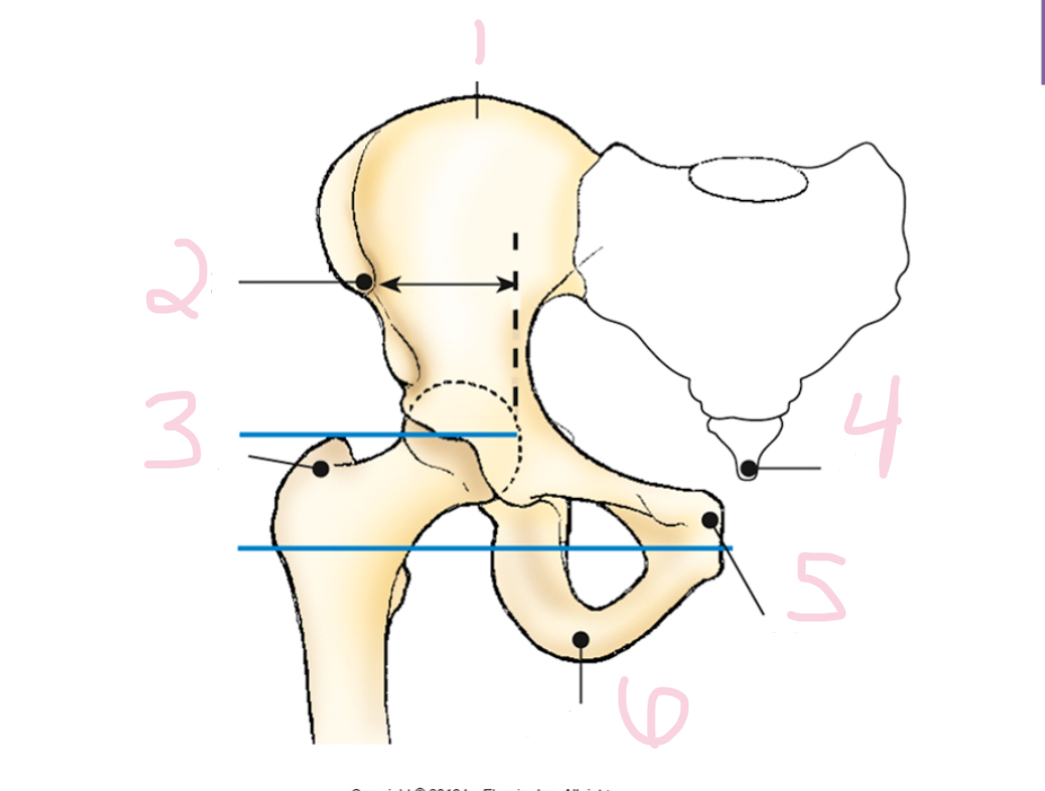
What is 1?
Iliac crest
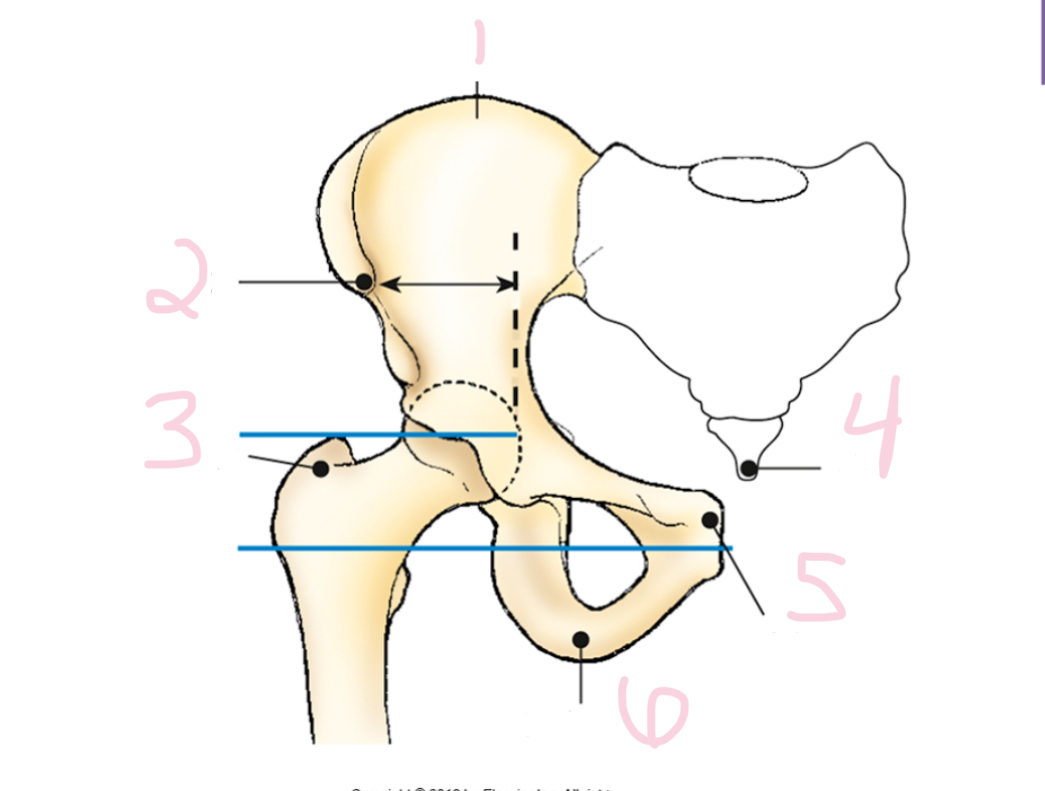
What is 2?
ASIS
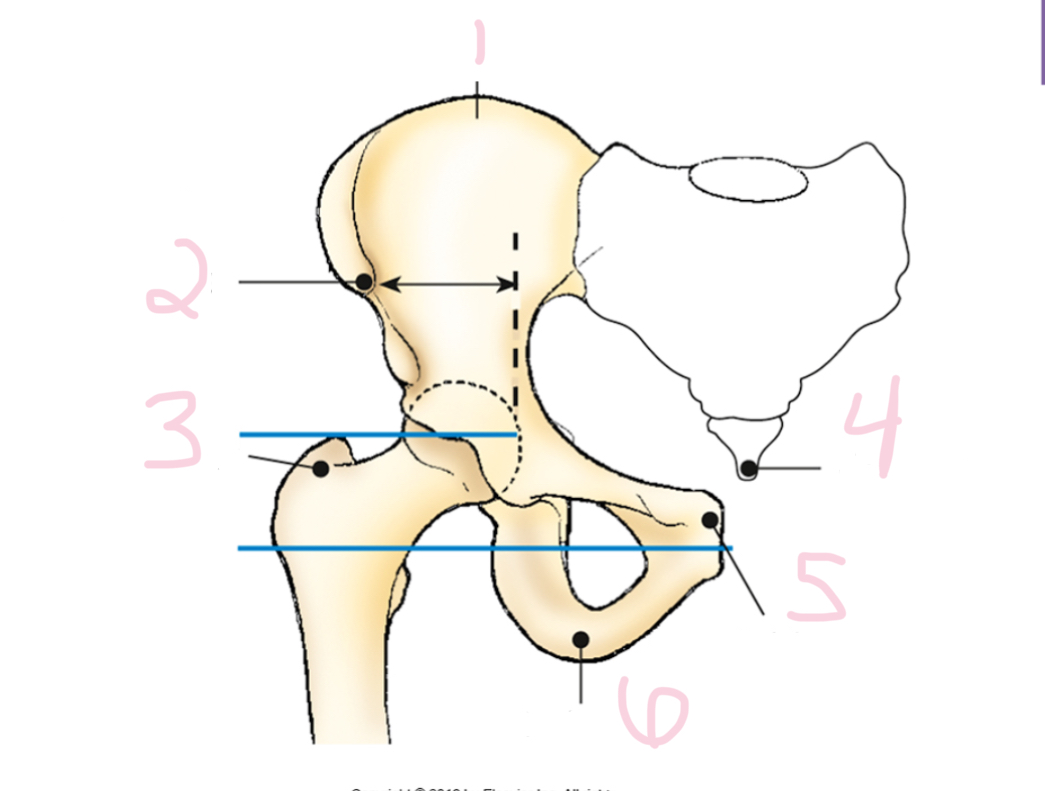
What is 3?
Greater trochanter
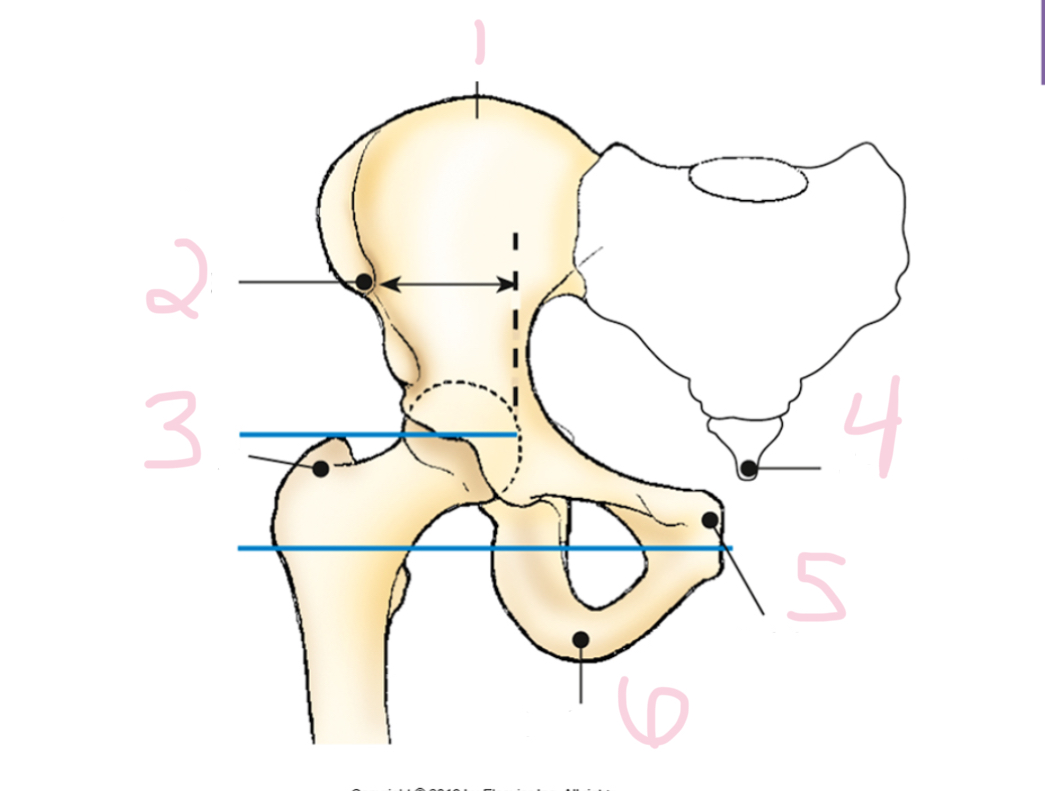
What is 4?
Coccyx
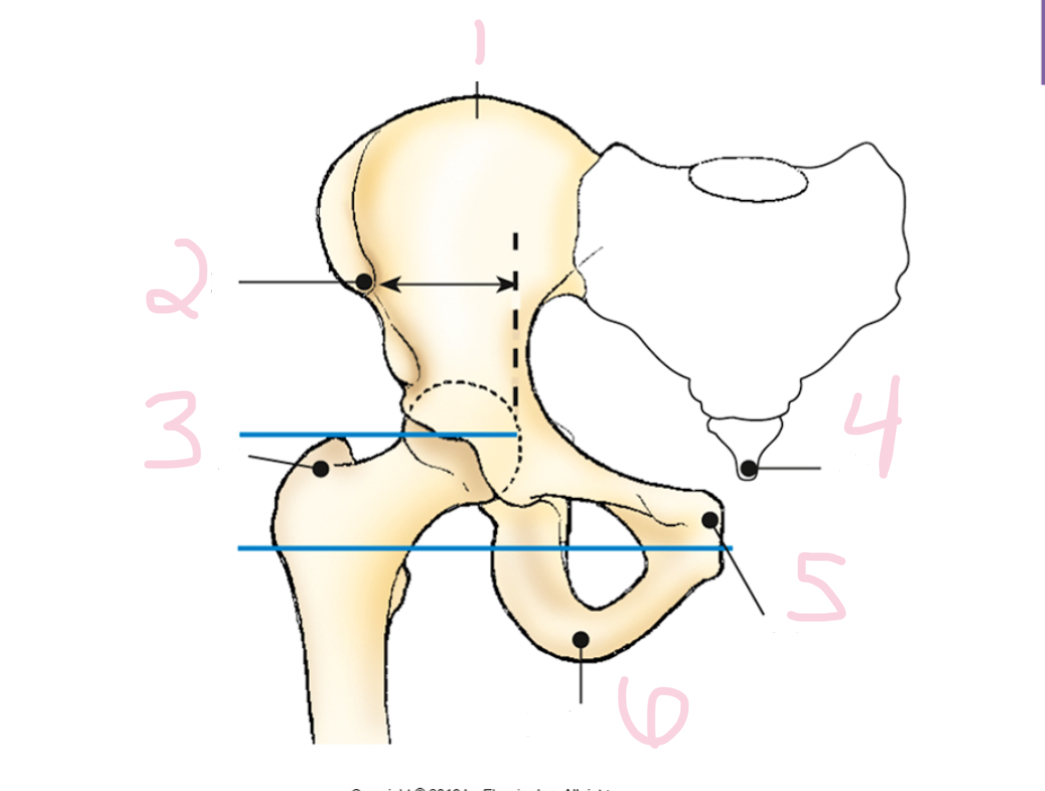
What is 5?
Pubic symph
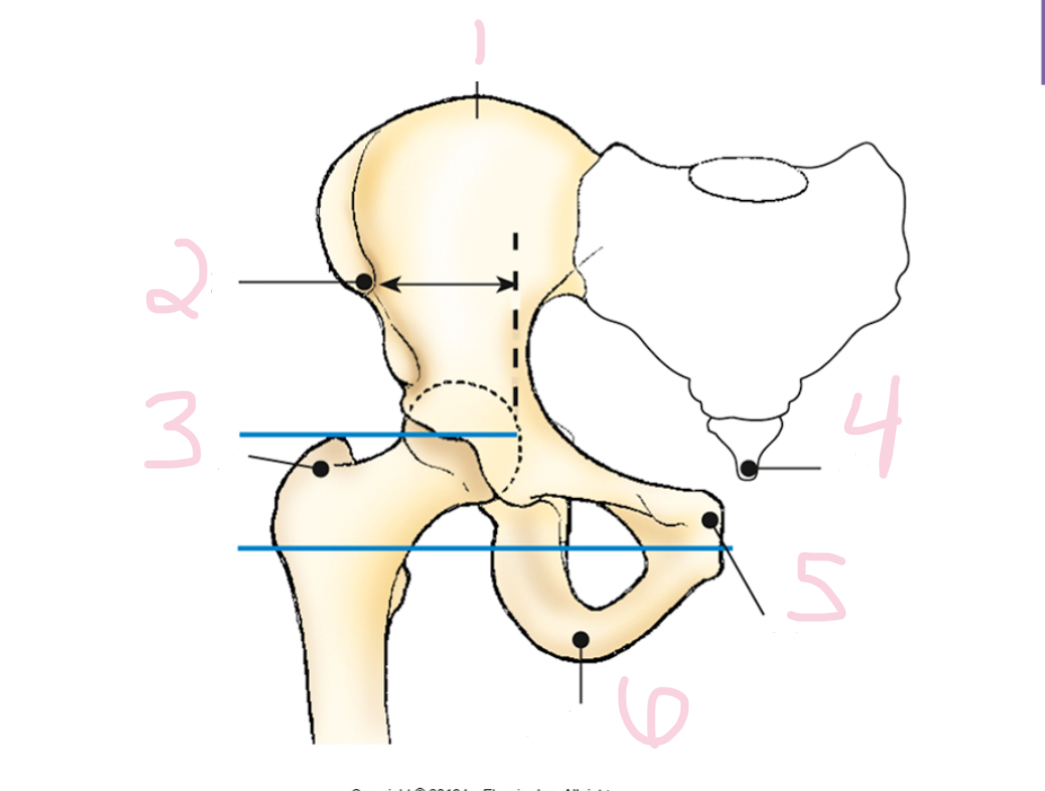
What is 6?
Ischial tuberosity
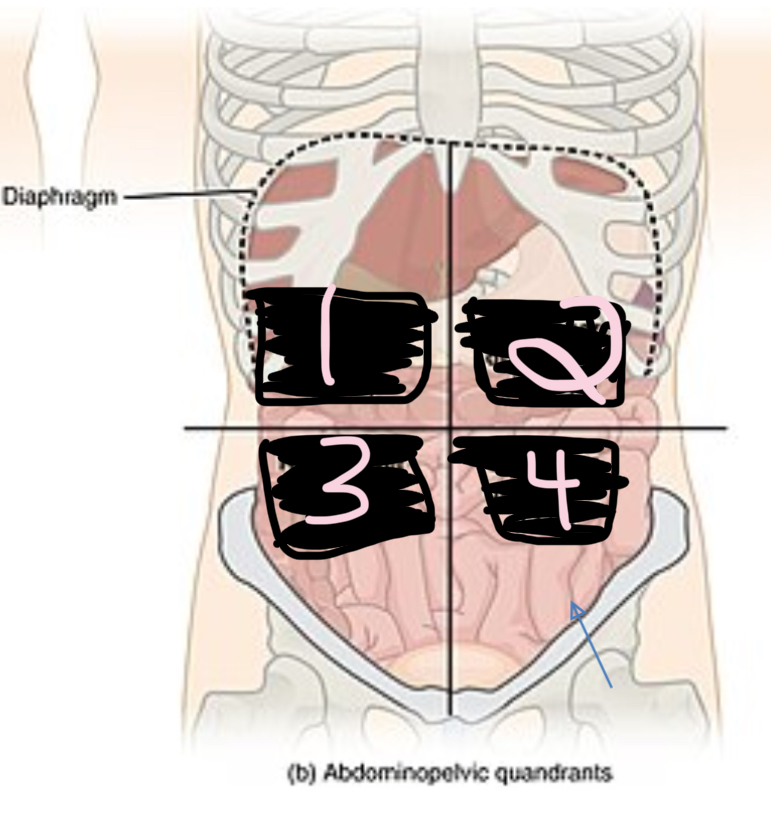
What is 1?
RUQ